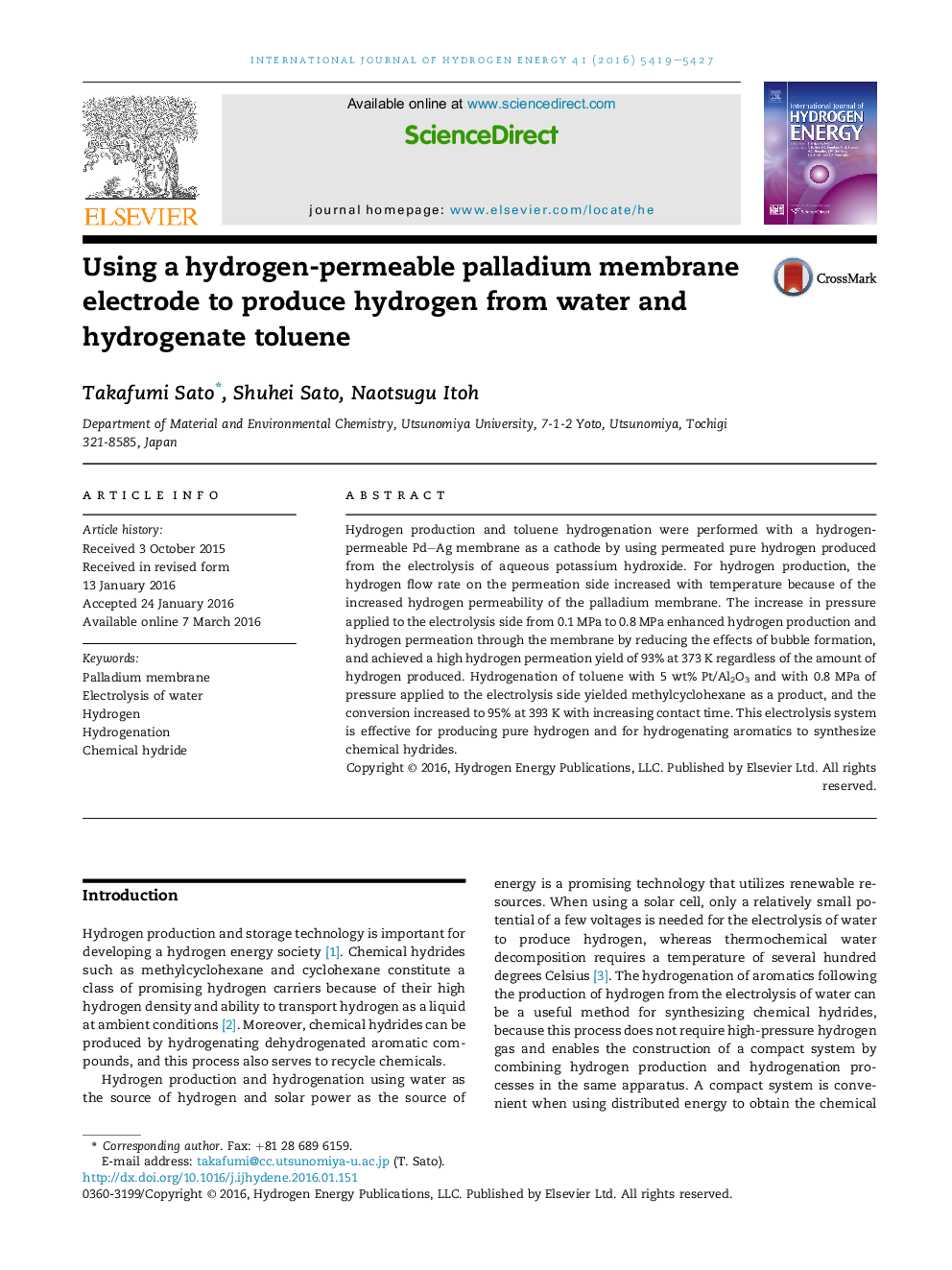| Article ID | Journal | Published Year | Pages | File Type |
|---|---|---|---|---|
| 1268782 | International Journal of Hydrogen Energy | 2016 | 9 Pages |
•Hydrogen was produced by electrolysis of water with a palladium membrane electrode.•Increasing the pressure on the electrolysis side enhanced hydrogen permeation.•Hydrogen permeation yield was over 90%.•Toluene was hydrogenated by hydrogen by using a palladium membrane electrode.•Toluene conversion reached more than 95% with Pt/Al2O3.
Hydrogen production and toluene hydrogenation were performed with a hydrogen-permeable Pd–Ag membrane as a cathode by using permeated pure hydrogen produced from the electrolysis of aqueous potassium hydroxide. For hydrogen production, the hydrogen flow rate on the permeation side increased with temperature because of the increased hydrogen permeability of the palladium membrane. The increase in pressure applied to the electrolysis side from 0.1 MPa to 0.8 MPa enhanced hydrogen production and hydrogen permeation through the membrane by reducing the effects of bubble formation, and achieved a high hydrogen permeation yield of 93% at 373 K regardless of the amount of hydrogen produced. Hydrogenation of toluene with 5 wt% Pt/Al2O3 and with 0.8 MPa of pressure applied to the electrolysis side yielded methylcyclohexane as a product, and the conversion increased to 95% at 393 K with increasing contact time. This electrolysis system is effective for producing pure hydrogen and for hydrogenating aromatics to synthesize chemical hydrides.
